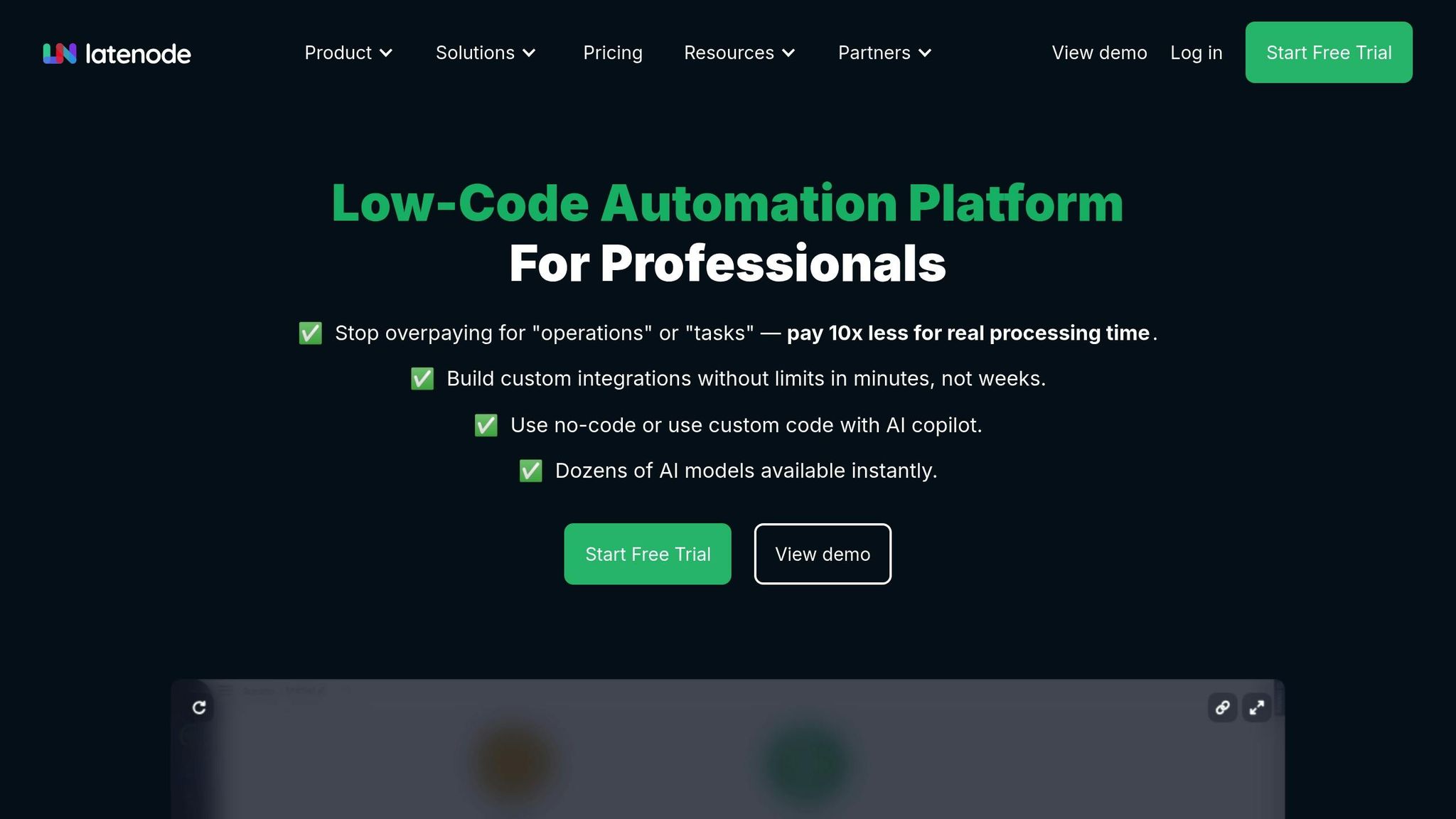


AI assistants are no longer just tools - they’re becoming indispensable partners in managing workflows and scaling operations. By 2023, the market for AI-powered assistants reached $108.6 billion, with projections to more than double by 2030. Why? These systems don’t just automate tasks; they learn, adapt, and make decisions in real time.
This article unpacks how AI assistants are changing the game for businesses, focusing on:
Let’s explore how these assistants are reshaping productivity and what it takes to implement them effectively.
AI assistants have become essential tools for improving daily workflows. These systems go beyond basic automation by using sophisticated algorithms to understand user inputs, adapt over time, and make decisions autonomously. Let’s break down the features that make these tools so effective.
AI assistants rely on advanced technologies to interpret and act on user needs. Here are their key capabilities:
| Feature | Impact on Business |
|---|---|
| Natural Language Processing | Interprets and responds to complex queries in conversational language |
| Continuous Learning | Improves performance based on past interactions |
| Multi-platform Integration | Connects effortlessly with existing tools and databases |
| 24/7 Availability | Provides consistent monitoring and support around the clock |
| Automated Decision Making | Analyzes data and executes actions based on set criteria |
AI assistants significantly improve efficiency by simplifying core operations. They handle tasks like data collection, analysis, and reporting while ensuring smooth team communication. For example, they can route messages, schedule meetings, and maintain detailed communication logs, reducing manual effort and improving productivity [2].
One of the standout features of AI assistants is their ability to adapt to specific needs. By analyzing user behavior and preferences, they create detailed profiles that allow for highly personalized interactions.
In education, for instance, AI assistants act as intelligent tutors, adjusting teaching methods to suit individual learning styles. In business, personalization can take several forms:
With tools like Latenode's visual workflow designer, businesses can easily implement these personalized AI solutions without requiring extensive coding expertise. This blend of advanced features, operational improvements, and tailored configurations lays the groundwork for more streamlined and effective operations. Up next, we’ll look at how these features integrate smoothly with low-code platforms.
Low-code platforms have made integrating AI assistants into business workflows more accessible than ever. These tools eliminate the need for complex programming while retaining powerful automation capabilities. This ease of use has driven their rapid adoption across industries.
Low-code platforms revolutionize how businesses implement AI assistants by providing visual tools and intelligent code generation. Here’s how they make a difference:
| Feature | Impact on Business |
|---|---|
| Visual Workflow Design | Speeds up development by simplifying processes |
| AI-Assisted Code Generation | Reduces reliance on advanced programming knowledge |
| Drag-and-Drop Integration | Quickly connects various systems |
| Real-Time Testing | Ensures immediate validation of workflows |
For example, instead of spending days coding a data collection form with webhook functionality, users can now instruct an AI assistant to generate the HTML and routing logic in just minutes.

Latenode takes these benefits further by enabling users to build complex automations without needing coding expertise. Its AI Assistant simplifies tasks that once required advanced skills.
"The beauty of the AI Assistant on Latenode is that it represents a huge step toward our mission: now, even those unfamiliar with coding can create their own microservices or build intricate automations." - Oleg Zankov, CEO Latenode
Key features of Latenode include:
For instance, you could use the AI assistant to create a script that fetches the latest USD/EUR exchange rates using the axios NPM package. The platform handles API calls and data formatting, saving time and effort.
Traditional coding often requires significant time, expertise, and ongoing maintenance. Low-code platforms, on the other hand, offer agile workflows with minimal coding. Take Trello card automation as an example: a user can simply ask the AI assistant to generate integration code, input API credentials, and set up board details. If any issues arise, the AI assistant provides troubleshooting guidance. This approach demonstrates how low-code solutions handle both simple and complex tasks efficiently.
Integrating AI assistants requires careful planning and execution to ensure success.
Before implementing an AI assistant, focus on three key areas:
A solid foundation in these areas ensures a smoother integration process. Once the setup is complete, shift your focus to evaluating the assistant's effectiveness.
Track the AI assistant's performance by monitoring metrics like task completion, response accuracy, and user engagement. Key indicators to review include:
Start with a pilot program before rolling out the assistant across your organization. This phased approach allows you to make adjustments based on practical feedback and observed outcomes.
AI assistants are reshaping how businesses operate, making processes faster and more efficient. To see this in action, let’s explore a practical example of how automation can simplify operations.
One common scenario involves automating the management of new user registrations. Here’s how such a workflow might look:
Using Latenode’s visual interface, businesses can easily monitor the entire process, from data retrieval to email notifications. This transparency ensures smooth task management and helps identify potential issues quickly.
Automating user registration tasks demonstrates how AI assistants can eliminate repetitive manual work and improve operational efficiency. However, the success of such workflows depends on careful setup and regular performance checks to maintain accuracy and reliability over time.
AI assistants are transforming how businesses operate, offering tools that integrate smoothly into workflows with minimal coding. Predictions suggest these intelligent tools will play a key role in business success by 2026 [1], positioning them as essential partners in enterprise operations.
These assistants simplify tasks across various departments, from sales and HR to finance and operations, allowing teams to prioritize strategic goals. By managing repetitive tasks with accuracy, they free up employees to focus on projects that require creativity and critical thinking.
By automating routine processes, AI agents enable businesses to boost efficiency and lower costs. When paired with well-organized data and properly trained teams, these tools can significantly improve overall performance.
Organizations that adopt AI tools early are likely to gain a strong advantage in productivity and cost management. On the other hand, businesses that delay risk falling behind in an increasingly fast-paced market. The future of work is becoming a partnership - AI handles repetitive tasks while humans focus on innovation and strategy - ushering in a new chapter of workplace efficiency and success.
AI assistants adapt to individual users and industries by analyzing relevant data, such as user preferences, behaviors, and specific workflows. They utilize this information to tailor their responses, automate tasks, and provide personalized recommendations that align with unique needs.
For industries, these assistants can be trained with domain-specific knowledge to understand specialized terminology or processes, ensuring they deliver accurate and context-aware support. This level of customization helps businesses streamline operations and improve decision-making with solutions that feel uniquely designed for their goals.
Low-code platforms like Latenode simplify the process of integrating AI assistants into business workflows by offering user-friendly tools and features. Their visual interface makes it easy to design and customize workflows without requiring advanced coding skills.
Key benefits include access to pre-built templates for faster implementation, robust data validation to ensure accuracy, and flexible integration options that work seamlessly with existing systems. Additionally, Latenode supports custom code embedding and provides advanced security measures to protect your data, making it a powerful solution for enhancing productivity and streamlining operations.
To successfully implement and track the performance of AI assistants, businesses should focus on three key areas:
By following these steps, businesses can optimize the value of their AI assistants while ensuring they align with organizational goals.



